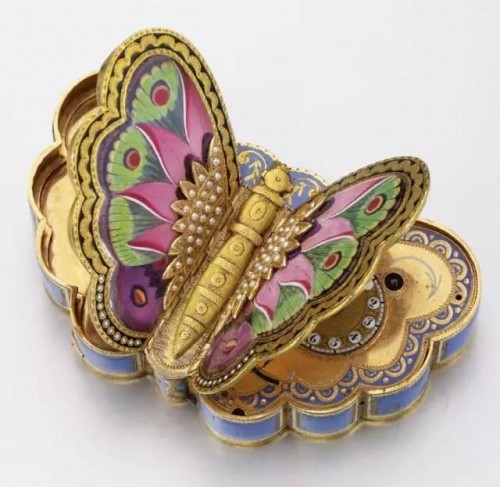Enamel, also known as enamel, is a process in which synthetic materials are fired at high temperatures and coated on iron, glass, copper, or ceramic objects to form a beautiful, smooth, and colorful enamel surface. The enamel coated object has exquisite colors and is easy to wipe. It can prevent rust and can also be used as decoration. Enamel is an ancient and widely used craft commonly used in jewelry and decorative arts.
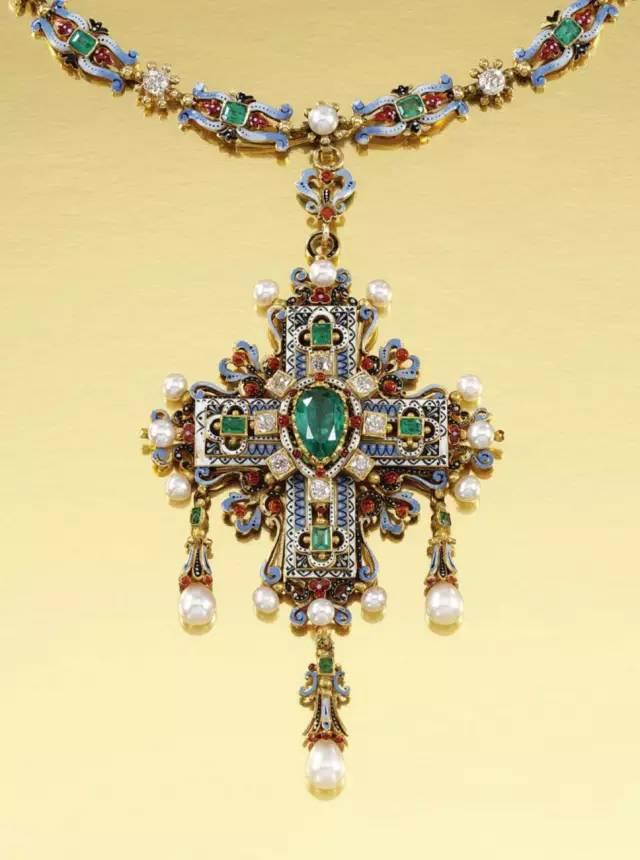
The New Classical Style Colorful Enamel Scroll Decorative Cross Designed by ERNESTORINZI in the 1870s

Diamond enamel pocket watch/circa 1890
The material of enamel is generally made of borax, quartz, feldspar, saltpeter, and sodium carbonate, combined with the burning of lead and tin oxides. Enamel powder can be synthesized in two ways: by pressing colored glass into powder, or by mixing colorless glass with pigments (such as metal oxides).
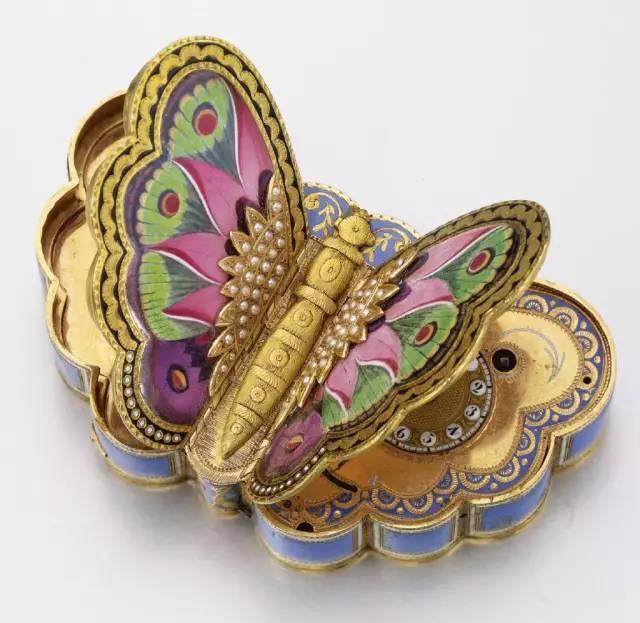
A snuff box watch made of gold and enamel in 1820
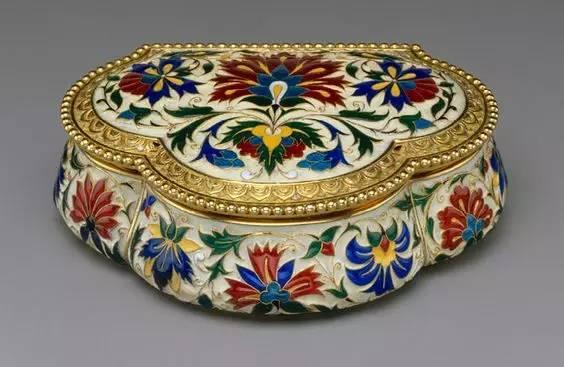
1875 Gold and enamel jewelry boxes made by the famous Parisian company falize
The ancient Egyptians decorated ceramics and stone tools with enamel. Artists from ancient Greece, China, Russia, and Celtic times were mostly used for the surface of metal objects, while the Romans commonly used enamel techniques in glass containers. The iron, cobalt, and neodymium produced during firing make the surface colorful, forming a transparent or opaque enamel surface, sometimes even reaching semi transparency.
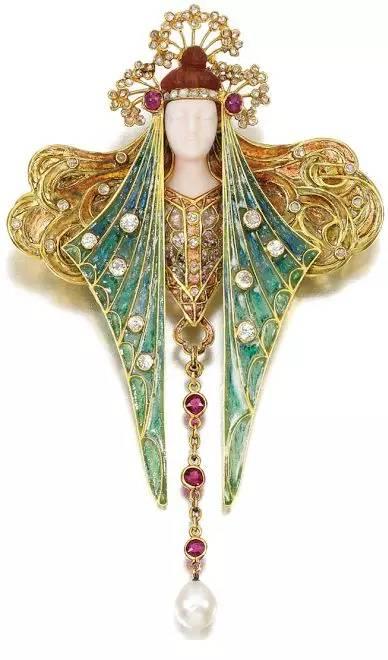
Late 19th century Art Nouveau style enamel brooch
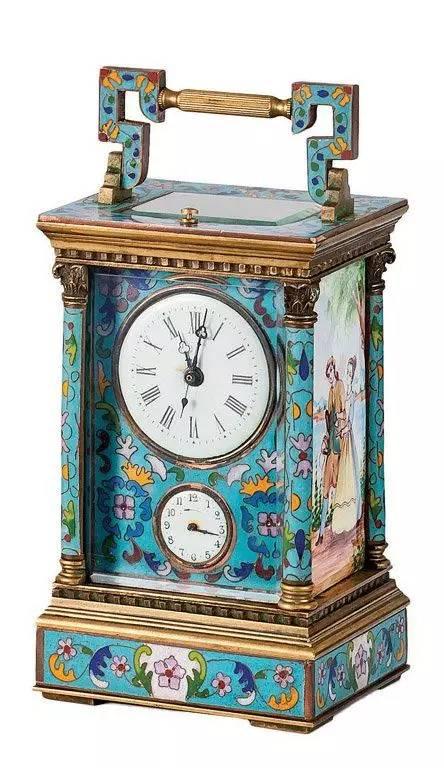
Carved spray painted enamel silver plated copper portable travel clock/France/19th century
Craftsmen admired the vibrant and bright colors of enamel items and began to try to apply enamel technology to jewelry and decoration industries. The most famous is the Faberge metalworking enamel colored egg in St. Petersburg, Russia. Faberge is a famous Russian goldsmith, jewelry craftsman, and designer. His works are quite reminiscent of the artistic style of Louis XVI in France, and the Easter eggs produced by his workshop are particularly exquisite, known as the "Russian colored eggs", which are considered treasures by the royal families of Russia and various countries. Faberge's Easter eggs refer to Easter jewelry eggs made by Faberge's workshop between 1885 and 1917 for the nobles in the palace. The most famous Easter eggs are those made by Tsar Alexander III and the wives and mothers of Nicholas II at that time. As they were made for the royal family, they are also known as "Imperial Faberge eggs".
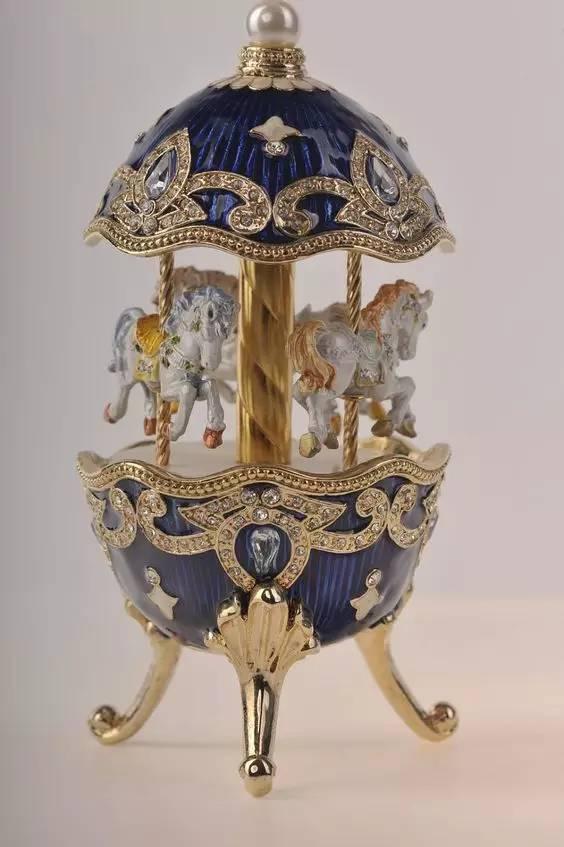
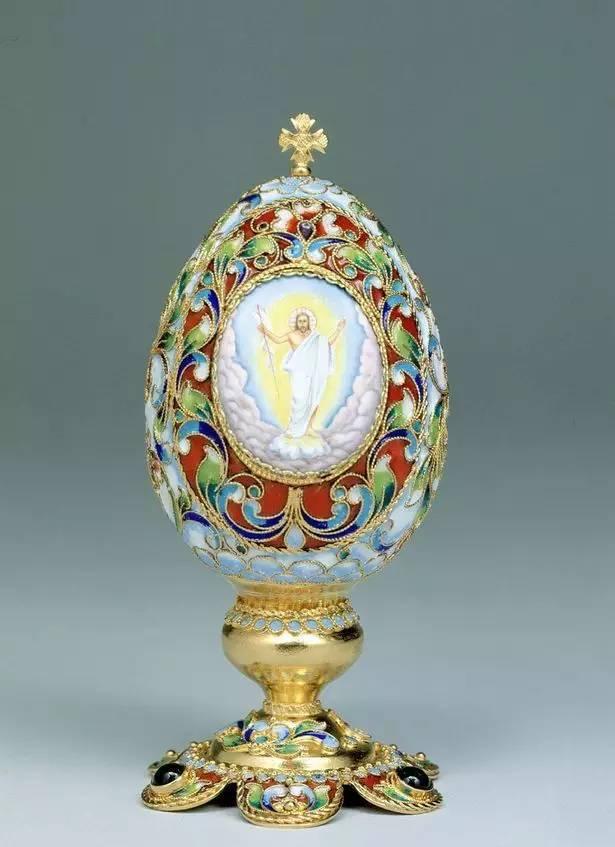
The famous Faberge metalworking enamel eggs in St. Petersburg, Russia
After the 13th century, enamel began to be used in the decoration industry, mainly for copper, copper alloys, as well as gold and silver.




